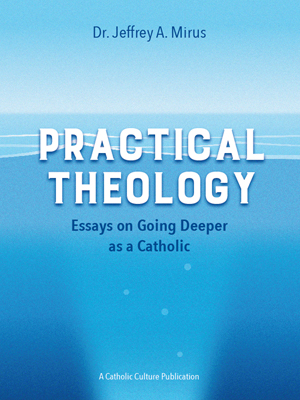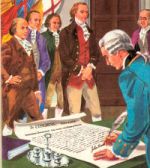Gerhard Ludwig Müller: Another Faulty Traditionialist Condemnation
By Dr. Jeff Mirus ( bio - articles - email ) | Jul 09, 2012
Archbishop Gerhard Müller—the brand new Prefect of the Congregation for the Doctrine of the Faith—has also come under Traditionalist attack. A case in point is the July 9th Remnant Online blog entry, New Head of CDF Dissents from Certain Doctrines of Faith?, by “a concerned Catholic priest.” All this does is make me concerned for the priest.
Free eBook:

|
| Free eBook: Practical Theology |
Essentially this anonymous author, in his zeal to condemn Archbishop Müller for heresy, has gone to the extreme trouble of looking up information about his ideas on, well, Wikipedia. However, not all of the cited material is from the English Wikipedia page. The German-language page is far more extensive, but one problem is that the alleged damning quotations are somewhat difficult to interpret, and they are all translations.
Despite the fact that these quotations were clearly selected to alarm conservative Catholics, each one cries out to be read in the context of the larger work from which it was taken. Without this context, it is actually impossible to be sure of the specific point the Archbishop was attempting to make. But one can easily imagine several perfectly orthodox contexts in each case. With this in mind, let us take up each quote in turn:
On the Eucharist, from a book on the Mass in 2002: “In reality, the body and blood of Christ do not mean the material components of the human person of Jesus during his lifetime or in his transfigured corporality. Here, body and blood mean the presence of Christ in the signs of the medium of bread and wine.”
[Note: I pass over the expression “human person”, which is clearly either an inadvertent slip or a mistranslation. The intended distinction is between Christ's human body before the Resurrection and his glorified body.]
This statement does not in itself contradict the Real Presence. In fact it specifically affirms the presence of Christ under the appearance (signs) of bread and wine, though by itself it admits the possibility of a merely spiritual presence, which would be a heresy. But it seems to be speaking to a deeper question of the Real Presence, the question of what constitutes substance as opposed to accidents in a proper understanding of transubstantiation. Let us consider for a moment that the material components of Christ’s earthly body were changing constantly, and that we have no adequate conception of the material components of his transfigured body. Even from this simple point of view, there are interesting questions about this notion of presence. We definitely wish to know the question or quarrel that provided the context for this speculation.
In the absence of that knowledge, we might consider one possible context which makes the statement rather easy to resolve. When we refer to the “body” of Christ, we would be wrong to assert that the meaning of the word “body” is exhausted by the material components of Christ’s body. And when we refer to the “blood” of Christ, we would also be wrong to assert that what we mean is exhausted by the material components of Christ’s blood. For in fact we know by Faith that Christ is present body, blood, soul and divinity in either Eucharistic species. And therefore, strictly according to the quotation in the dock, “material components” is not what “body” and “blood” actually “mean”.
I emphasize again that I do not know exactly what point Archbishop Müller wished to make in context, but we are a long way from proving heresy from this quotation.
Comment on Liberation Theology: “The theology of Gustavo Gutiérrez, independently of how you look at it, is orthodox because it is orthopractic and it teaches us the correct way of acting in a Christian fashion since it comes from true faith.”
Here I have just two points to make. First, Archbishop Müller was at one time a student of Gustavo Gutiérrez, a very significant liberation theologian, and he remained a friend. In this context, I would tend to cut anyone some slack.
Second, however, consider what this quotation actually says: It says that purely in itself Gutiérrez’ mode of theology was orthodox in that it was primarily concerned to take our faith (as defined by Catholic doctrine, or orthodoxy) and teach us how to live out its demands in practice (orthopraxis). So in skeletal or paradigmatic form—“independently of how you look at it”—this is not unorthodox. But of course people may “look at it” the wrong way; they may introduce their own agenda, and twist the theological method in its actual results.
In any case, this was said of his teacher and friend. It is the kind of generous statement which I can live with, especially if Archbishop Müller’s experience of Gutiérrez was that of a man of deep faith. It may also be theologically more precise than some of us, after past battles, care to admit. In other words, quarrels with Gutiérrez were not primarily over doctrinal issues, but over how to practice the Faith.
Mariology, from the 5th edition of his Catholic Dogmatics in 2003: The doctrine of the Perpetual Virginity of the Blessed Virgin Mary is “not so much concerned with specific physiological proprieties in the natural process of birth..., but with the healing and saving influence of the grace of the Savior on human nature.”
This one is even easier. If we presume that Archbishop Müller means to deny the physiological miracles associated with the Virgin Birth, of course, the quotation sets off loud alarms. But why assume what the quotation does not say? In fact, it admits the physiological miracles easily enough. All it says is that the doctrine of Mary’s perpetual virginity is “not so much concerned” with the physiological miracles as with what it teaches us about the “healing and saving influence of the grace of the Savior”.
The phrase “not so much concerned” may simply mean that the doctrine has a higher purpose than what meets the eye, exactly as most of Christ’s miracles did. In this context, the word “proprieties” (not, as some may think too quickly, “properties”) might be extremely significant. Perhaps Archbishop Müller is simply saying that the Divine purpose in these miracles was not so much to suggest a concern for propriety as to foreshadow and affirm the healing and saving influence of Christ. I would also love to see this in the original context of dogmatic theology, to see how this notion of the “healing and saving influence of the grace of the Savior on human nature” is explicated and applied as a principle of theological interpretation (hermeneutic).
Advanced theology is hard work. Let’s not jump to unwarranted conclusions about the orthodoxy of a close friend and trusted colleague of Pope Benedict XVI, an archbishop who is overseeing the publication of the sixteen volumes of the Pope’s writings, a theologian who has spent his last ten years working in the Congregation for the Doctrine of the Faith, and the Congregation’s new Prefect, whose views may have matured and refined themselves significantly during that time.
[For a brief postscript, see More on Archbishop Muüller: Attacked by Modernists.]
See also my related entry: Joseph Augustine Di Noia: A Faulty Traditionalist Condemnation.
All comments are moderated. To lighten our editing burden, only current donors are allowed to Sound Off. If you are a current donor, log in to see the comment form; otherwise please support our work, and Sound Off!
-
Posted by: justinswanton2559 -
Jul. 17, 2012 12:33 PM ET USA
Well done, Dr Mirus! This hullabaloo is all about CONTEXT. One could take isolated verses out of the New Testament and demonstrate (with a little interpretation) that Christ was a certifiable lunatic: "For I have come to set a man against his father, and a daughter against her mother, and a daughter-in-law against her mother-in-law". Or how about: "Why do you call me good? No one is good except God alone." Or even: "Get behind me, Satan!" Can we please have the entire passages of these quotes?
-
Posted by: koinonia -
Jul. 11, 2012 8:38 PM ET USA
Problems in the Church, the liturgical abuses, the theological concerns, the deficient catechetical instruction etc are not things criticized out of anger, animosity, pride or any other untoward emotion. Our opinions and emotions don't matter. What matters is Dismas on the cross next to his Savior, Zacchaeus in the tree, the publican, the Samaritan woman, the Good Samaritan, the Roman centurion who claimed he was unworthy... What matters is that Our Lord remembers us when He enters His Kingdom.
-
Posted by: Justin8110 -
Jul. 10, 2012 6:10 PM ET USA
In the old days "advanced theology" was only for those who actually had a deep interior life. As a traditionalist myself I'm the first to admit we can be an angry bitter lot but face it, there has been a lot of turmoil in the Church and lack of leadership and we all deal with it differently. Would I outright call either a heretic? No, because I cannot read what is in their souls but I do think like you that some of what is said by them appears to be problematic.
-
Posted by: wojo425627 -
Jul. 09, 2012 9:40 PM ET USA
This is what a lot of the traditionalists websites do. They take quotes, often patched together from various paragraphs in a book or document and made to look like the person or group is herterodox or modernist. I wrote an response to one traditionalist who did this same type of thing, he had patched together quotes from vatican II which were wildly wrong and contrasted those false quotes with quotes with pre-1950 papal writings.
-
Posted by: -
Jul. 09, 2012 9:13 PM ET USA
The Mariology concerns me most. But you commit the same error you condemn. You, too, are offering a defense without reading the original text either. The statement as presented *is* troubling and the physiological sign is very important to the saving mission as it defends Christ's divinity, esp vs Modernity. Modesty prevented that from being a public sign, but the Church infallibly declared it de fide. Your defense is weak. Why not go root out the original German text for all of us to see?







